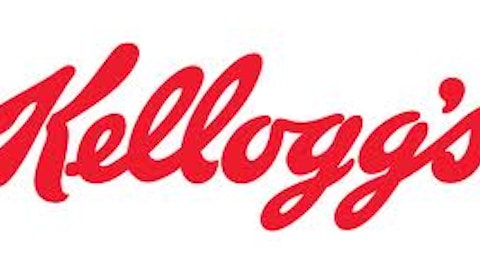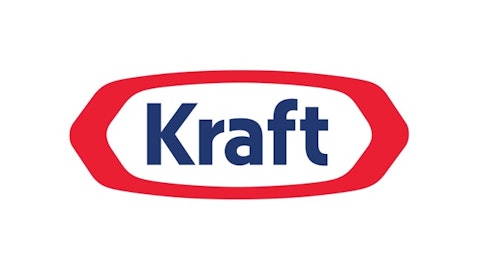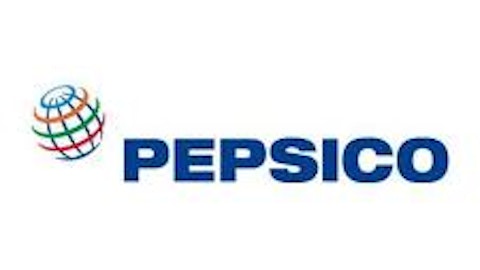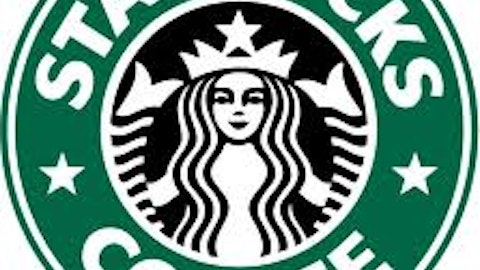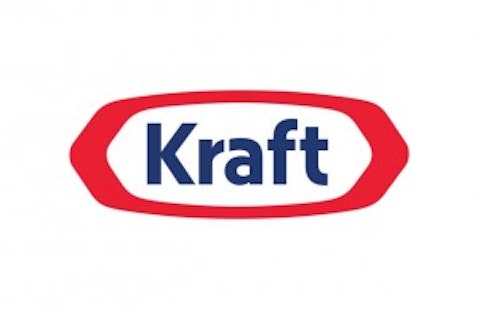
In the case of Kraft Foods Group Inc (NASDAQ:KRFT), it has shown amazing growth after its spinoff from its parent company. In the last year alone, its price went up by 25%. This new company also started to pay hefty dividends to its shareholders. At the moment, Kraft is offering a quarterly dividend of $0.50 per share.
In this piece of writing, I will analyze Kraft Foods Group Inc (NASDAQ:KRFT)’s ability to sustain returns. To do this, I analyze its business model, brands, and new innovations. I also look at both its top and bottom line performance to access its cash generating ability. I also check for its management’s moves to generate or save more cash for investors and for their business.
Kraft’s business model, brands and new innovations
Kraft Food Group was formed after the spinoff of Kraft Group. Kraft Foods Group Inc (NASDAQ:KRFT) is a consumer packaged food and beverage company. It manufactures and markets food and beverage products, including refreshment beverages and coffee, refrigerated meals, cheese, and other grocery products.
Despite losing the international platform of the snacks business after the spinoff, Kraft’s focus on domestic grocery business was the right move. Its portfolio consists of 9 brands, which generate over $500 million in annual sales. Kraft’s solid brands – Jell-O, Maxwell House, Oscar Mayer, and Crystal Light – give it a competitive advantage to become a key supplier for retailers.
Combined with solid brands, Kraft Foods Group Inc (NASDAQ:KRFT) has been generating massive returns on new product innovation. In the past four years, it has been able to launch several new products, like Philadelphia Indulgence Spreads, MiO Energy Liquid Water Enhancer, Oscar Mayer, etc. Recently, it announced first quarter results with strong organic growth of 2.1%.
Revenue, income, and margins
With a solid brand and new innovations, Kraft looks to be in a stable situation. In the first quarter, it has been able to show increasing both top and bottom-line performance. Kraft Foods Group Inc (NASDAQ:KRFT) is operating under five business segments named Beverages, Cheese, Refrigerated Meals, Grocery, and International and Foodservice.
All of its business segments are generating increasing profits except for the grocery segment. The grocery business segment experienced organic revenue decline of 0.4%. All other business segments have shown solid growth in both net revenue and organic revenue. Additionally, its cost cutting measures led to higher profits when top line growth is slow, which represents the presence of strong management. The table below demonstrates that it has achieved 9.2% growth in operating margin when revenue growth is near 2%.
| Operating Income | March 30, 2013 | March 31, 2012 | Percent of change |
|---|---|---|---|
| Beverages | $125 | $98 | 27.6% |
| Cheese | $172 | $167 | 3% |
| Refrigerated Meals | $97 | $93 | 4.4% |
| Grocery | $328 | $339 | (3.2%) |
| International & Foodservice | $124 | $101 | 22.8% |
Source: Quarterly Report (in millions)
Cash flow and balance sheet
On the other hand, Kraft is expecting to generate $1 billion in free cash flow at the end of this fiscal year. I believe its dividends are safe as it has the ability to generate hefty free cash flows. I think dividend investors should consider this company, as returning cash to investors through a top-tier dividend will be its key use of the substantial cash flows it generates.
Its balance sheet is not as good as its other financial matrices. Kraft is carrying long-term debt of $9.9 billion, according to the latest earnings report. However, it has a healthy current ratio of 1.47, which is sufficient to meet current liabilities. Its current assets represent 21.29% of assets while current liabilities account for only 14% of total liabilities. On top of that, it has been generating increasing profits and cash quarter over quarter. Thus, there is no red flag for the company to meet liabilities.
